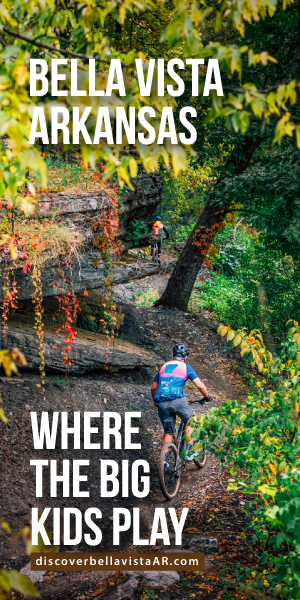Backcountry
Adventuring
The Ozark Randonneur bridges the gap between one-day races and
bikepacking endurance challenges.
Story and Potography by Kai Caddy

ADVENTURE ON: The Ozark Randonneur route isn’t lacking scenery.
There’s no shortage of cycling events in The Natural State. A quick thumb through to the events section of this magazine will show you that. But, when faced with the challenge of coming up with a unique event, Andrew Onermaa of Ozark Gravel Cyclists found a missing link and started work on the Ozark Randonneur.
The rando will feature 120- and 200-mile routes. Onermaa expects the event to slot in nicely between one-day, fully supported gravel races (think Big Sugar, The Rule of 3 and the Chinkapin Hollow Gravel Grinder to name a few) and long-distance, self-supported bikepacking races (like Doom, another Onermaa creation, or the Arkansas High Country Race).
“I started thinking if my interests are more on the long-distance and bikepacking end of the spectrum and then you’ve got all the one-day gravel races on the other end, maybe I will start working my way from this end of the spectrum and meet in the middle,” Onermaa said.
Inspiration came from Colorado’s Jeff Kerkove, who won last year’s Ouachita Triple Crown. Kerkove is a fan of 24-hour efforts. His Triple Crown time was 23 hours, 5 minutes. He told Onermaa of his love of the old 24-hour mountain bike races that were once popular.
“You can be a weekend warrior for those efforts,” Onermaa said. “You don’t have to take time off from work, you don’t have to commit a week of your life or whatever. And so it’s kind of that format, except launching out into the forest versus you’re going to do a bunch of laps in one area.”
Loosely, a randonneur is a long ride with time cut-offs all done in one push. Riders are self-sufficient but can ride in groups or solo, and every finisher receives equal recognition regardless of finishing order. To be listed as an official finisher, riders will have 15 hours to complete the 120-mile course and 25 hours to do the 200-mile loop.
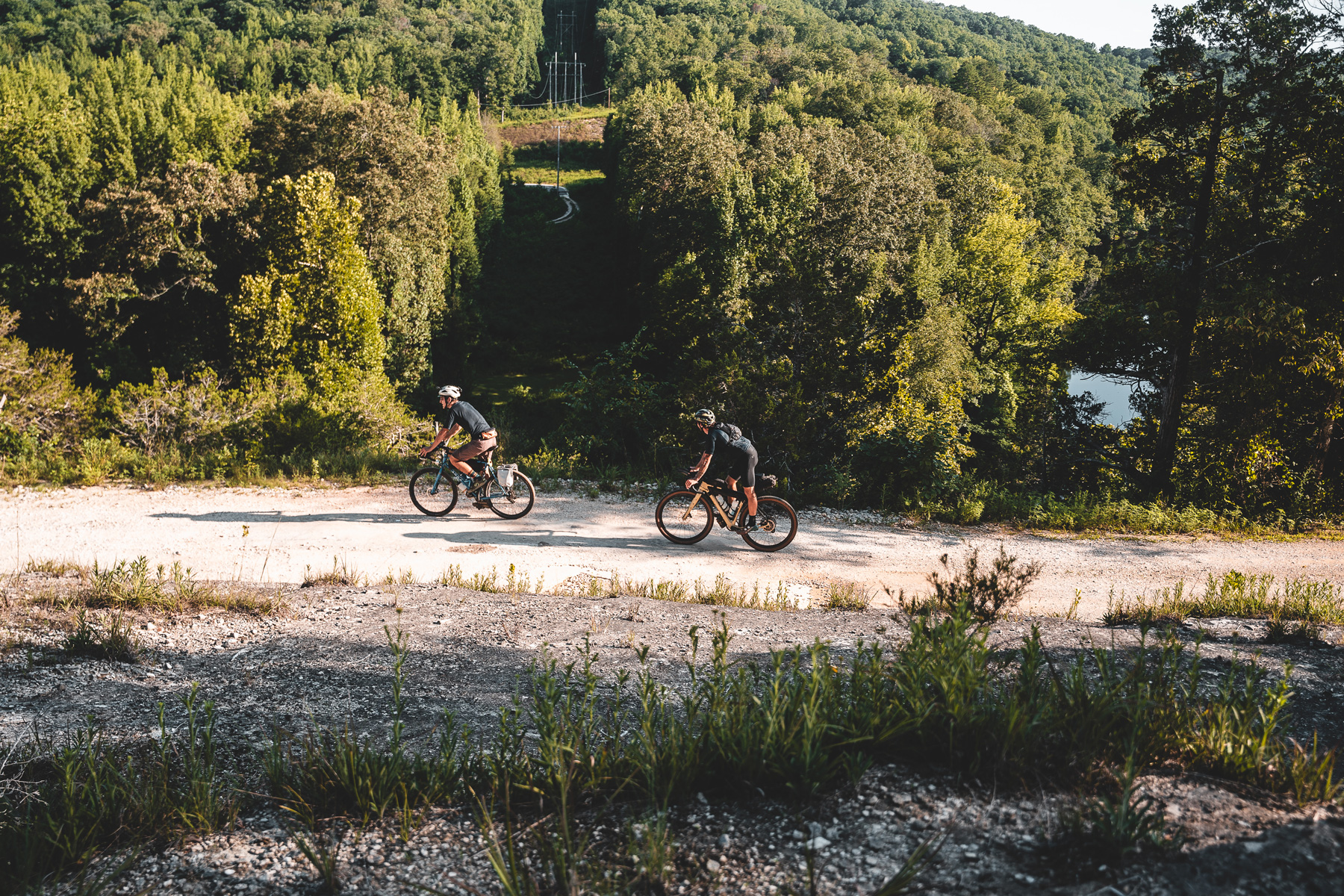
HALFWAY HOME: A view of the Buffalo River near Jasper will greet riders at just around the 100-mile mark of the 200-mile course.
“It’s very much so this is about a challenge versus this is a race,” Onermaa said. “Everybody gets the same thing for showing up. Everybody gets the same thing for finishing. There’s not a podium, there’s no first, second, third prize. If someone goes out and just really drills the course, and has a fast time, we’ll be like, ‘Hey, this was awesome, look at this time,’ but it’s still, at the end of the day, here’s our list of finishers.”
Onermaa is excited to showcase some roads not utilized in many events to this point.
“It’s highlighting roads that a lot of people still haven’t seen,” he said. “We get to showcase a really cool section of the Arkansas High Country route and get to show more of Madison County, where if you’re just doing a day ride from Fayetteville, you’re not seeing as much of it.”
Both routes start and finish from Puritan Coffee & Beer on Dickson Street in Fayetteville. The routes are the same through Huntsville, Purdy and split at Kingston. The shorter route loops back to Fayetteville from Kingston, while the 200-milers continue east to Ponca, Compton, Pruitt and, eventually, Jasper.
Jasper serves as the halfway point and the last spot to properly resupply for the second half of the trip. Two wells are the only water options noted on the route map for the second 100 miles.
“I’d say the next 30 miles after Jasper will be the absolute slowest section of the whole thing,” Onermaa said. “It’s back-to-back 1,000-foot climbs, all packed in that small space, and it’s loose, and it’s steep, and it’s not at the beginning of the ride, so you’re already a little tired.”
Onermaa says both routes get interesting at their halfway points.
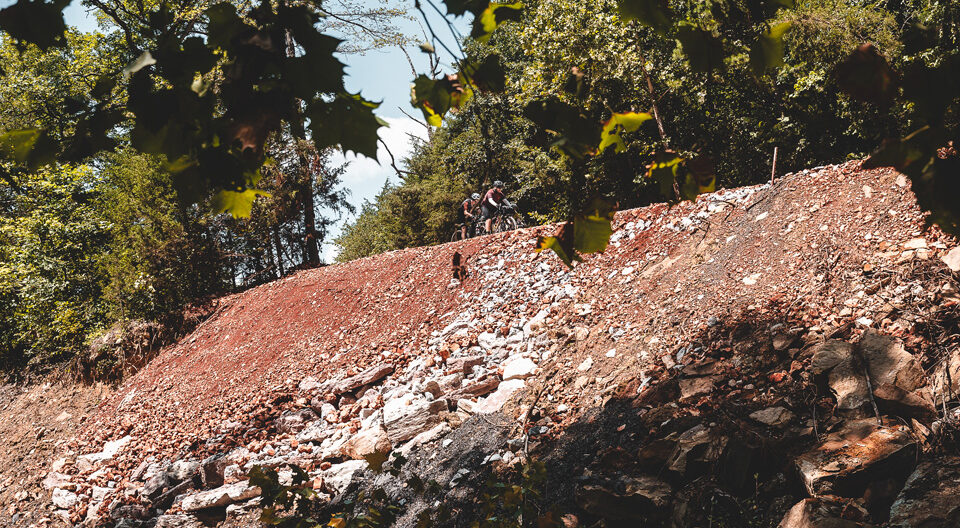
AN EVENT FOR ALL: The Rando has gained interest from the most experienced riders to newbies looking for adventure.
“I think it’s gonna be
eye-opening for a lot of people.”
“So the 200, that’s going to get into the biggest of hills, the steepest climbs and descents, a little bit more of the chunky stuff where people want the bigger tires,” he said. “The 120 — they get into some stuff where it’s going to be steeper and longer at times, even some double track, which you don’t really see a whole lot of double track if you’re riding just from out of town. They’ll go through some areas where cows may just be walking across the road. That’s something where people don’t even realize that exists in Arkansas, where you just might have a herd of cows in front of you, and how do I handle the fact that there’s all these cows blocking the road?”
Onermaa expects a wide range of riders to sign up for the event. At press time, 68 riders were already registered. The gamut ranges from experienced ultra-distance bikepackers, to one-day racers curious to try longer events, to the recreational rider who is bikepacking curious.
“We’ve got these people that have done these 1,000-mile, multiday races. You got some people where this is gonna be the biggest ride they’ve ever done in their entire life,” Onermaa said. “I think a lot of people are gonna walk away from it and have a deeper respect for riding in Arkansas and what it takes.”
And Onermaa is not shy about helping riders make the most of their time in the Ozarks. He led a group of riders on a two-day preview of the 200-mile course in July, communicates frequently with registered riders via email and is planning a packing clinic/route Q&A on Aug. 30.
Onermaa recommends riders see some of the roads as much as possible for the event so they can get a sense of the terrain.
“On long rides, practice continuous movement,” he said. “Make your gas station stops a little bit shorter, not going in and being in a hurry, but instead of sitting down in the AC and spending 35-55 minutes scrolling through your phone and getting your body template down, be used to being there for 10-15 minutes. I tell a lot of people, on your long ride day do as best you can to shrink that gap more and more and more. You want your moving time and your elapsed time to be pretty close.”
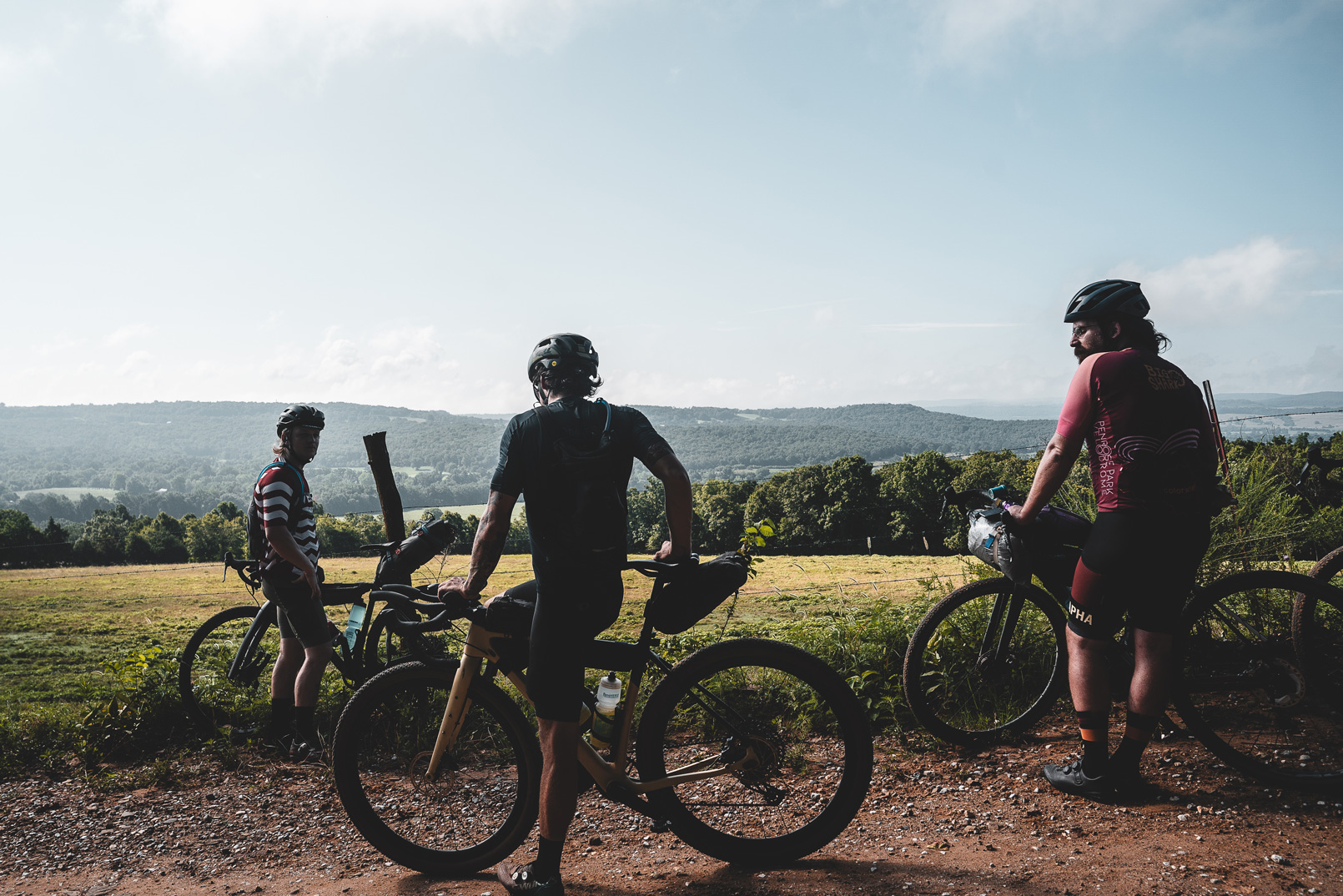
DON’T GO IT ALONE: Rando riders are expected to be self-sufficient, but there are no rules against riding in groups.
He also recommends being familiar with your equipment. If you’re going to use a bag, start riding with the bag. Determine which way you want to carry water — bladder or bottles. Dial in your nutrition.
“Get your setup as close as you can to what you think you’re going to use and start riding with it all the time,” Onermaa said. “If you’re carrying a little bit of extra weight on the bike, just recalculating what your pace is going to be. If you’re carrying three liters of water, realize you’re not going to go up some of those hills as quick as you normally would. Maybe that helps you make the decision of dropping your front chainring down by a couple teeth.”
Need some help from Onermaa? He’s down to respond to your questions via email. Don’t be shy: andrew@ozarkgravelcyclists.com. Register for the event at bikereg.com/the-ozark-randonneur.
“I think it’s gonna be eye-opening for a lot of people,” Onermaa said. “It’s a way to really showcase some backcountry riding in Arkansas. Coming back to the finish, it’ll be kind of the reality of this is what a bikepacking event is, you get to the finish and there’s not a crowd cheering for you, just people going about their normal life. People are gonna be out on Dickson, you’ll be rolling up on your bicycle and some drunk person is probably gonna yell at you. There’s not some super big party being thrown for finishers. This is kind of like, you know what you did and you’ll have at least one person that’s saying, ‘Hey, good job.’”
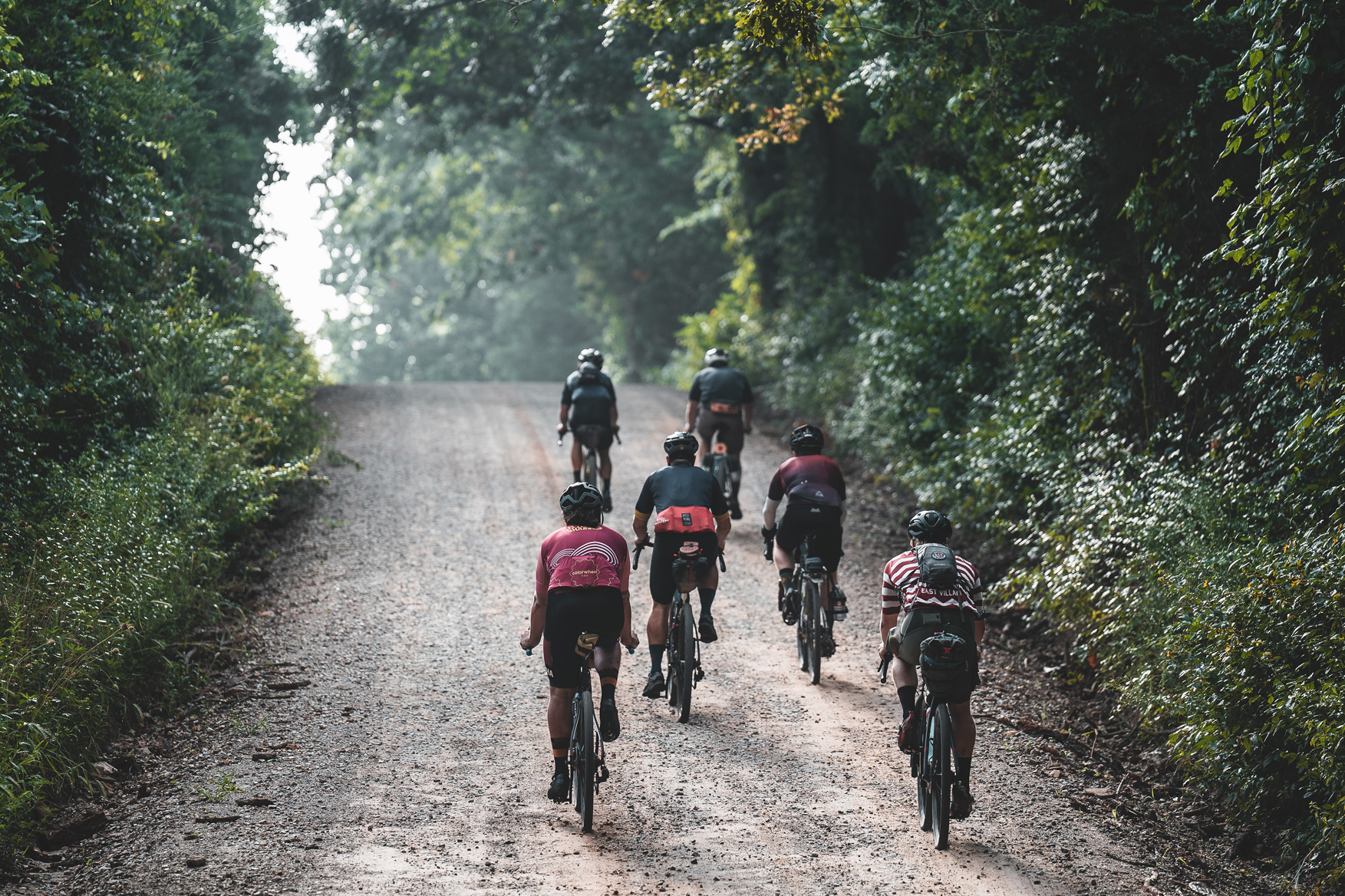
SOMETHING NEW: Event creator Andrew Onermaa is looking to fill a gap in the events calendar.
QUICK TIPS
A group of eight riders previewed the 200-mile course in July. Here’s some gear advice from those who have seen the terrain.
Jacob Loos of Bella Vista would opt for flat bars and a short-travel dropper seatpost “for getting speedy down the gnarly descents and through the corners.” Loos also wouldn’t ride the route on anything smaller than a 2-inch tire.
Alex Laitamaki recommends riders train on the chonkiest single track they can find, especially steep ups and downs, on their fully loaded bikes.
Bentonville’s Zach McCool said he would carry less bags than he did on the preview of the route to save weight. He also recommends that riders doing the 200-mile route have the 120-mile route loaded in their bike computers just in case they realize they’ve bitten off more than they can chew.

